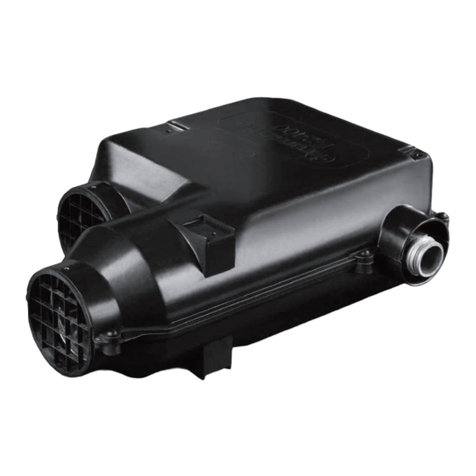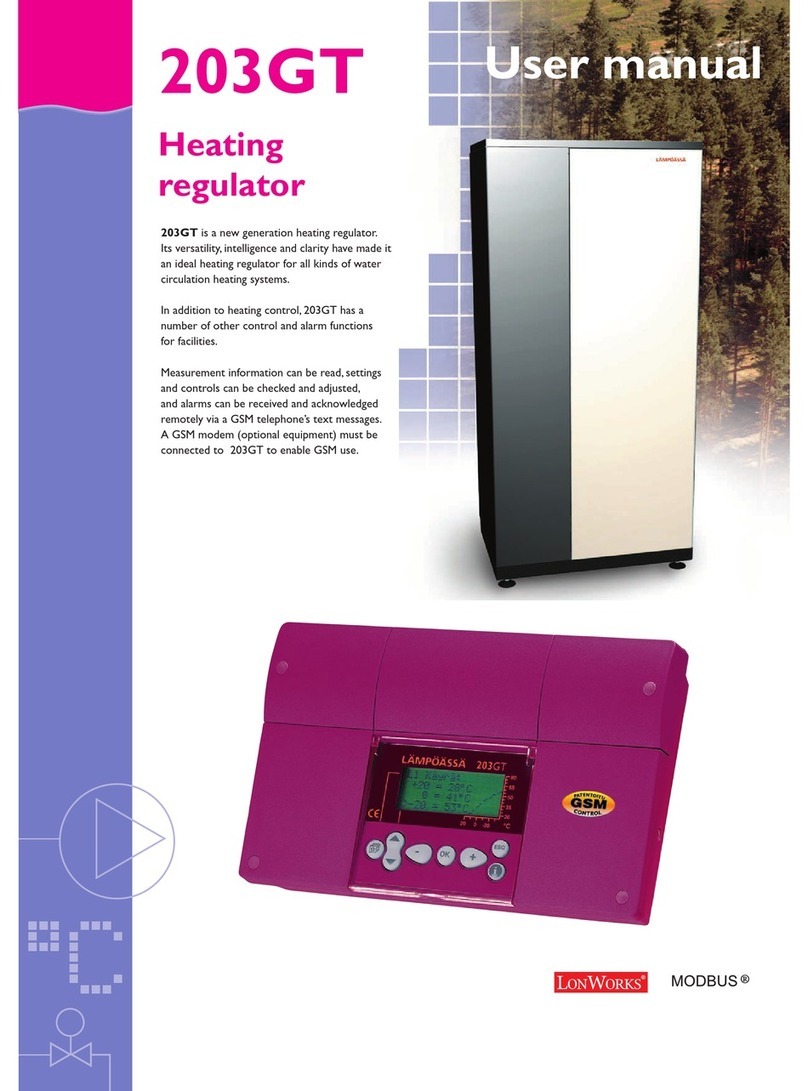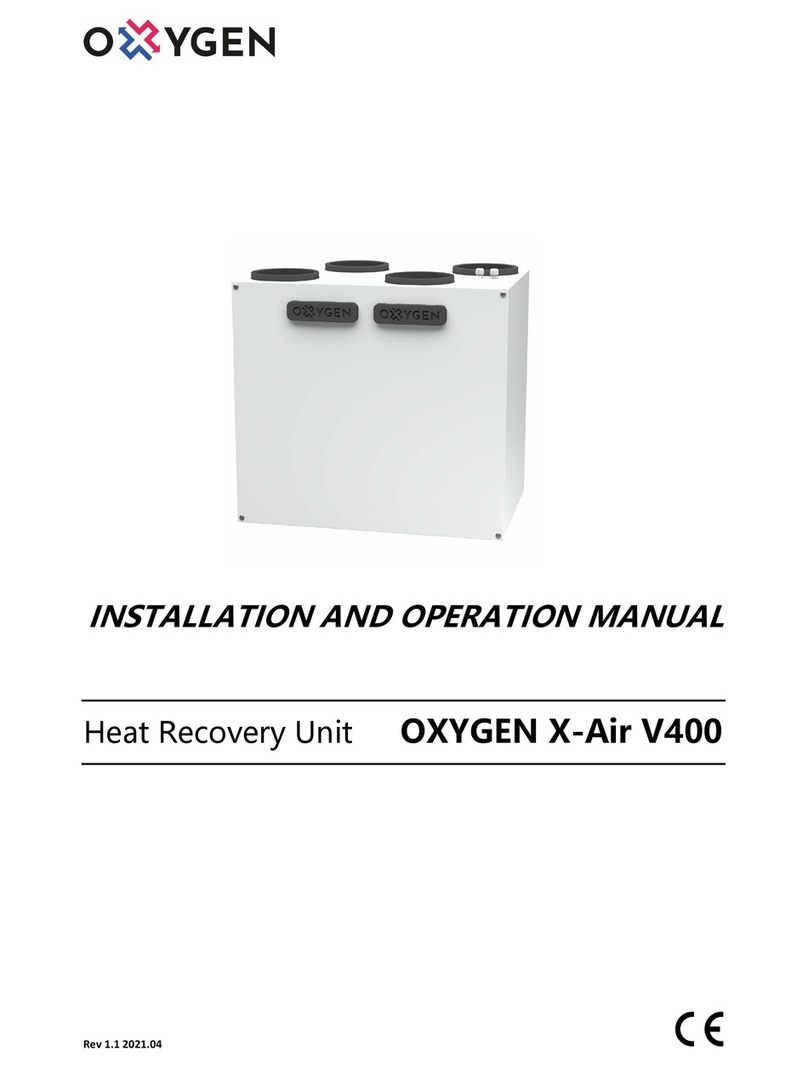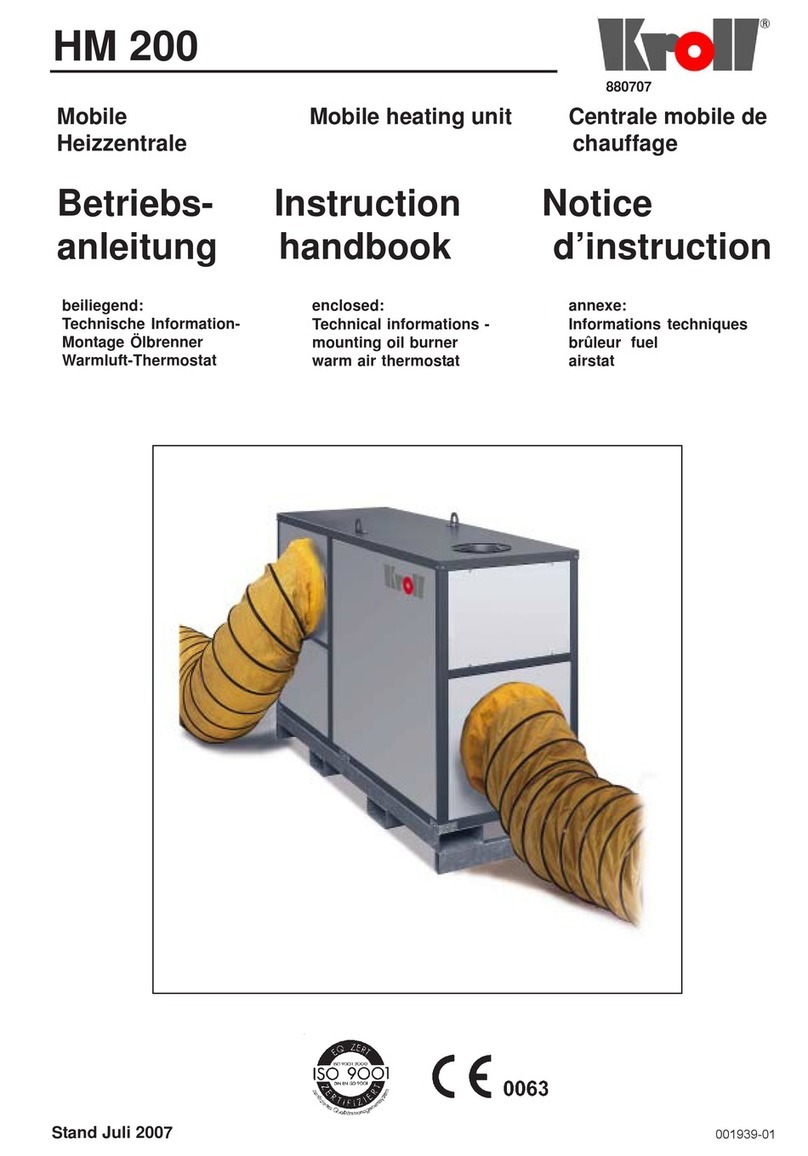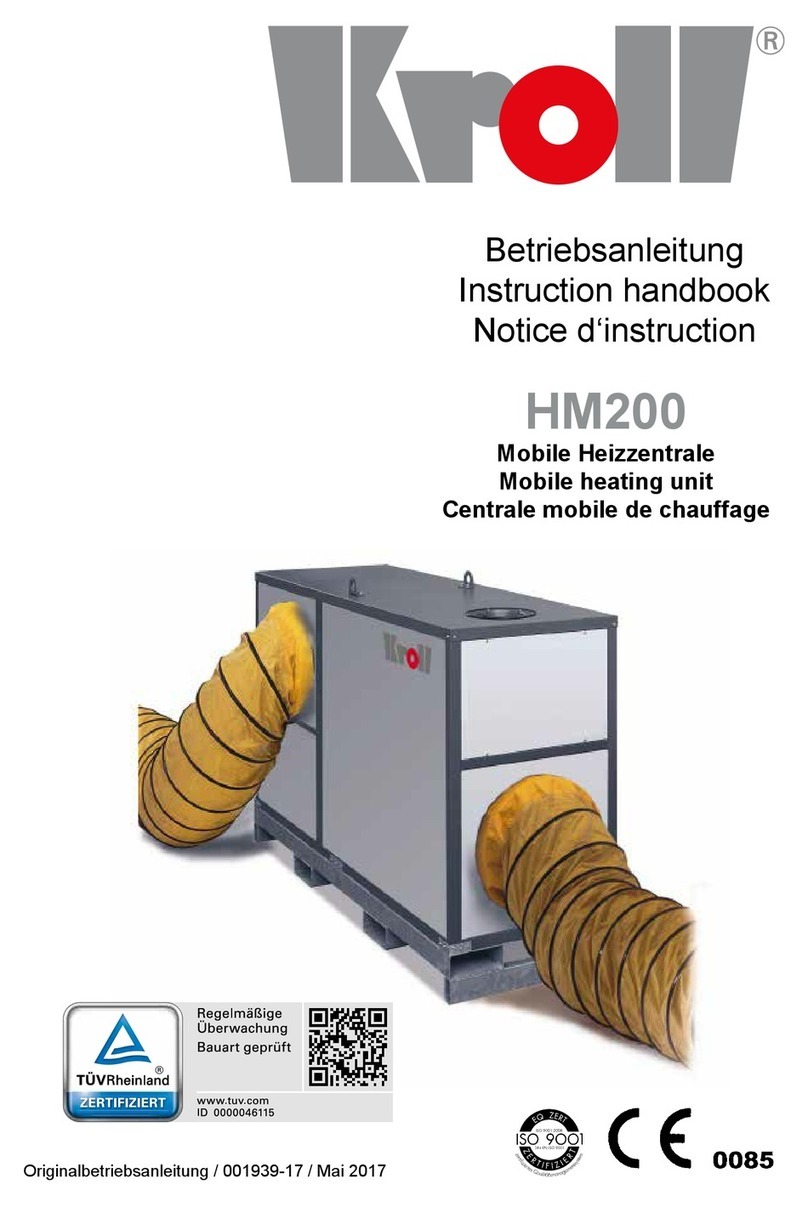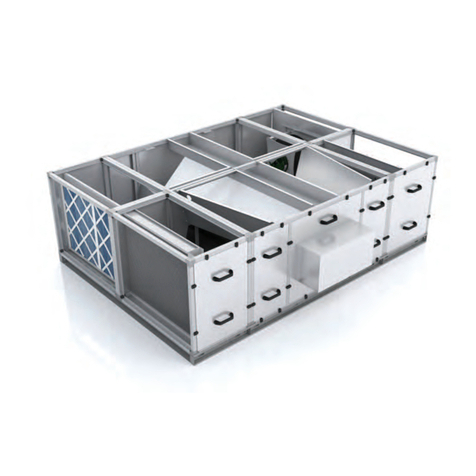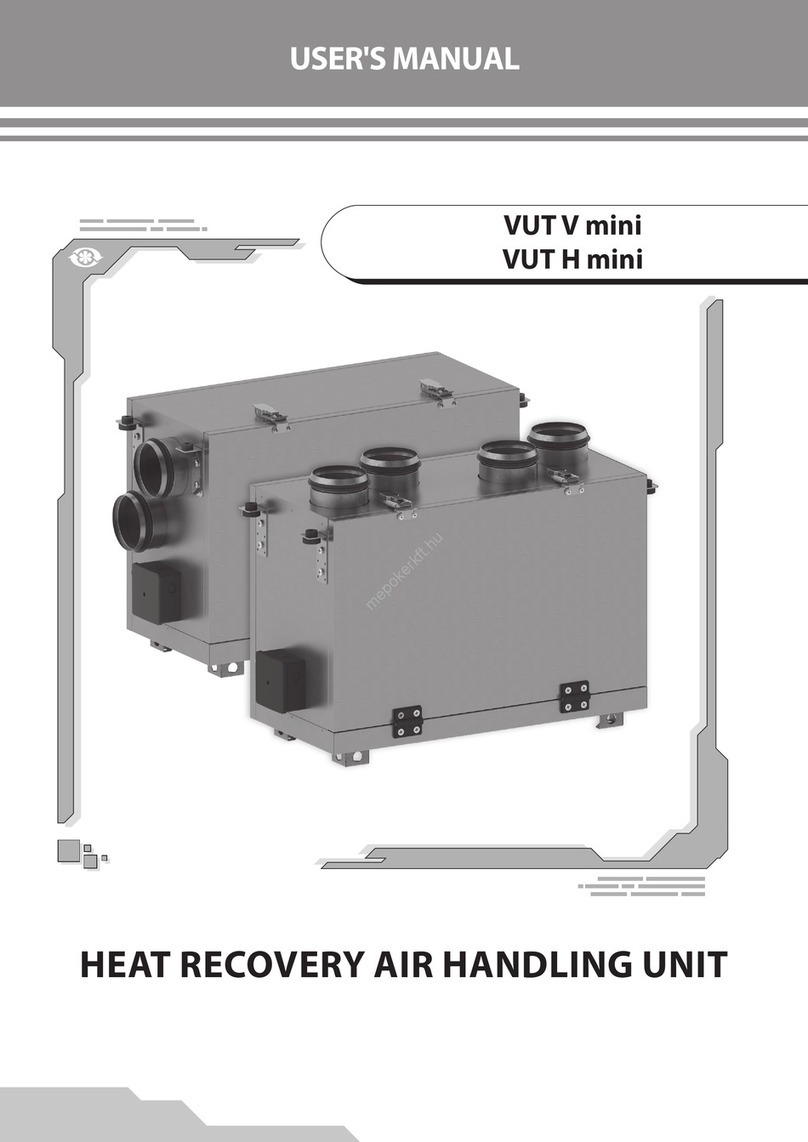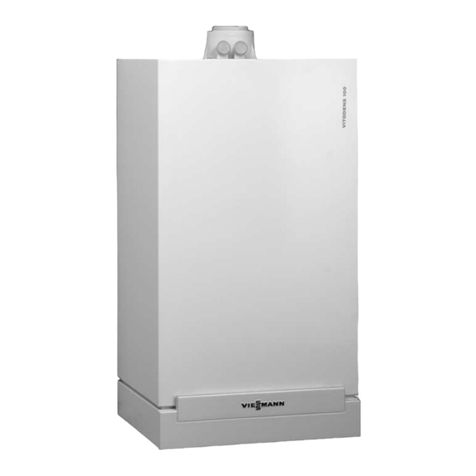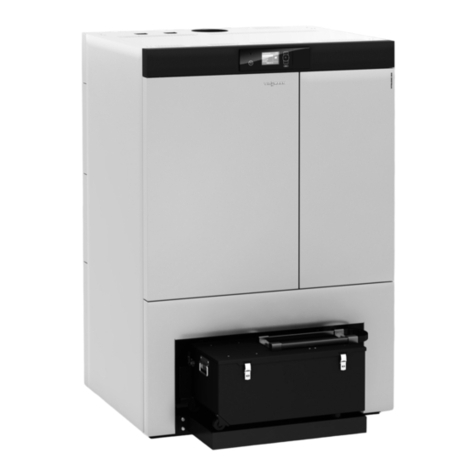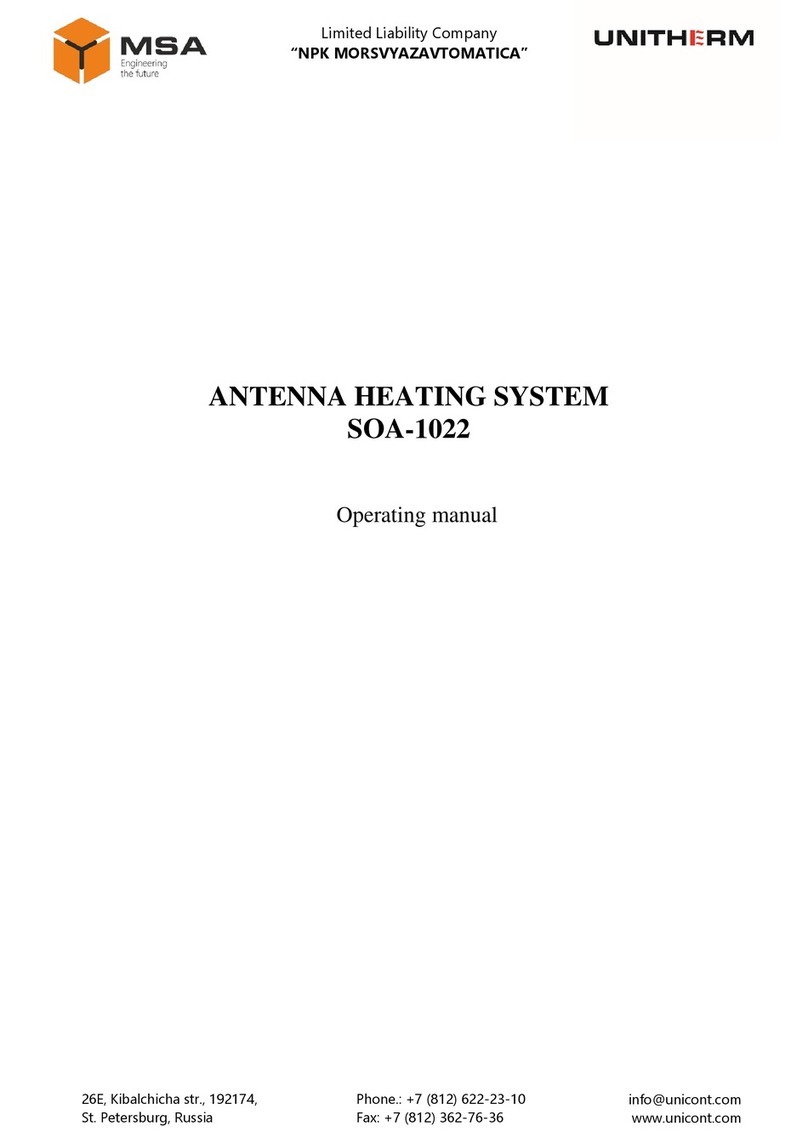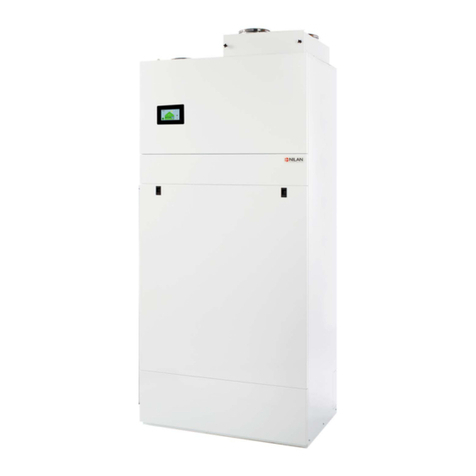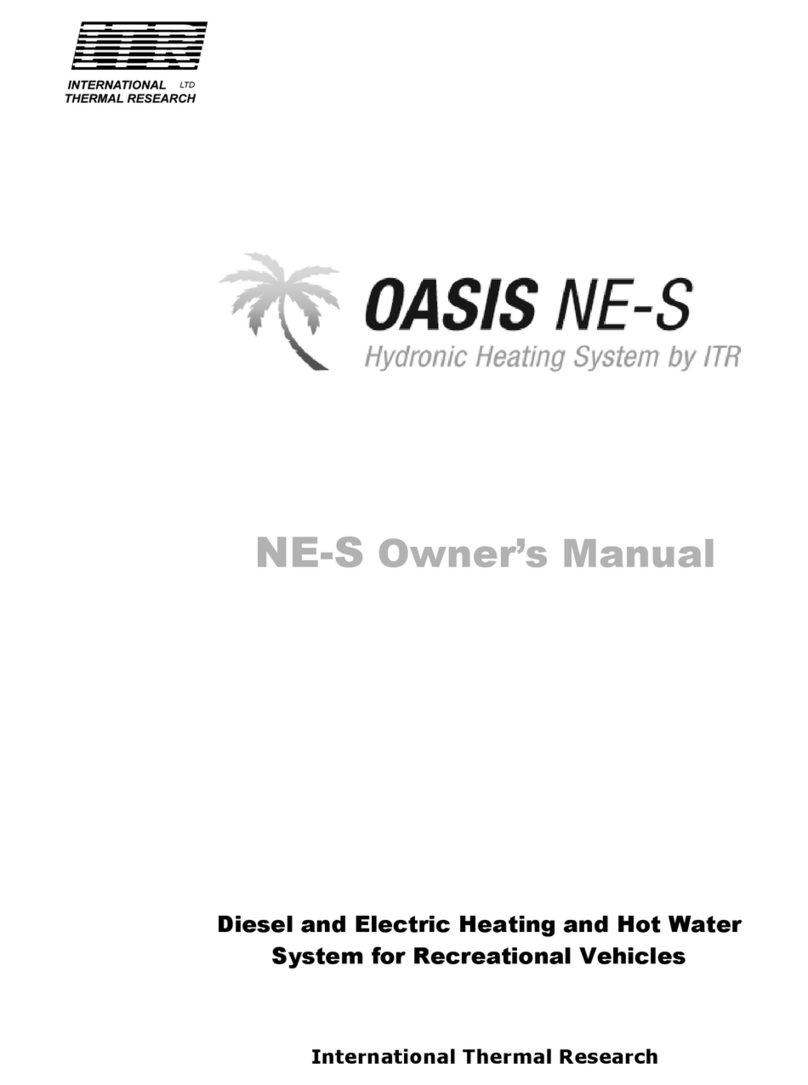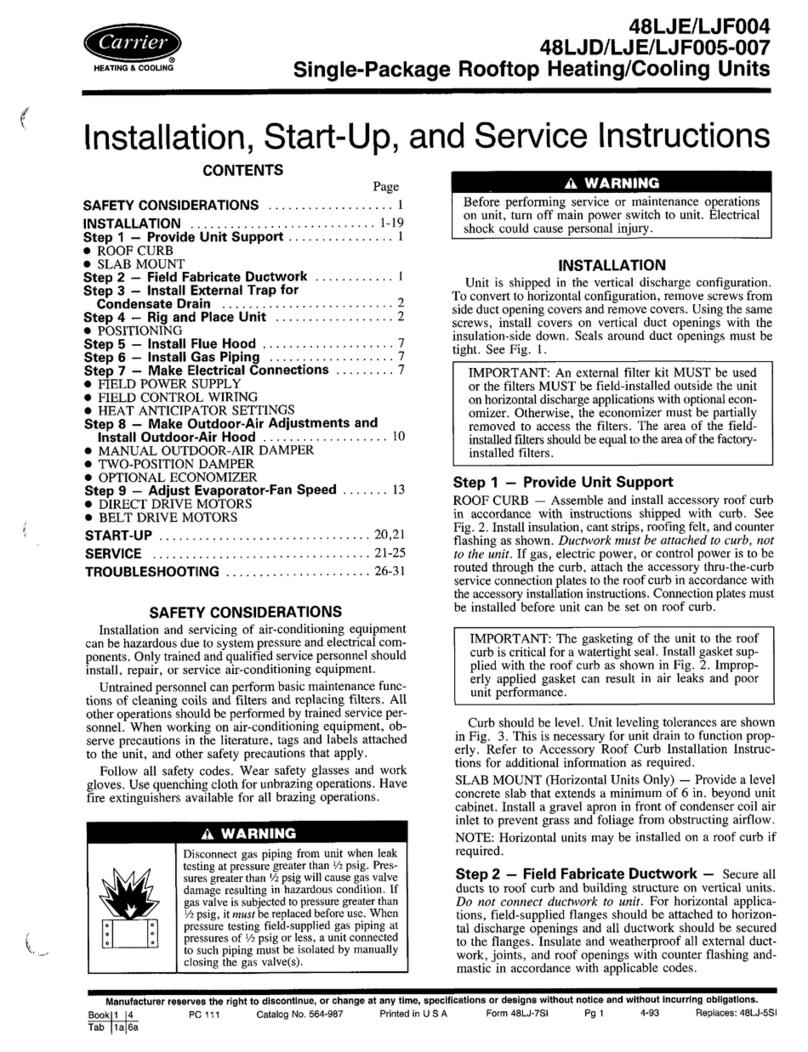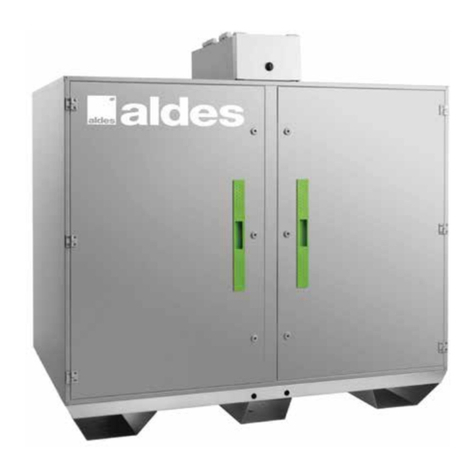
USER MANUAL CENTRAL HEATING STATION TYPE C22SPV23MEF
8 din 15
It is recommended th t the dist nce between the hot w ter connecting pipe of the centr l he tion st tion nd the ne rest
conumer is minimum 6m of pipe. Otherwiswe, there is lw ys the risk of hot w ter burns.
8.5 Connecting pipe of the s fety v lve
C ution!
D nger of hot w ter burns! The connecting pipe of the pressing of the safety valve is connected to the drain pipe to the
sewage system. Otherwise, there is always the risk of flooding, for which the manufacturer of the central heating station is not
responsible.
8.6 Air/ burnt g ses input/ output pipes
C ution!
The kit will oblig torily h ve 3% incline ( pproxim tively 2°) to be ble to elimin te the condens tion tow rds the
exterior. It is oblig tory to pl ce centr l he ting st tions in rooms with proper ventil tion systems ccording to
pplic ble norms. Study the technic l instructions before mounting/ inst lling, commissioning or servicing.
D nger!
It is completely forbidden to use the centr l he ting st tion without the burnt g ses output pipes bec use it end ngeres
people’s life nd he lth of people.
Repl cing is to be performed only by uthorized personnel following pplic ble l ws, using origin l sp re p rts
provided by the m nuf cturer.
8.7 Electric grid connection
The central heating station must be connected to one-phase network of 230V - 50Hz with protection null.
Dispersion withstand of the earthing switch (earthing) must comply with applicable norms (maximum 4 ohm, and the working
null must not have residual current).
Electric powering of the central heating station will be executed from a separate circuit provided with differential protection
fuses of 30 mA.
External connections must comply with applicable norms. Connection to the electric grid of the building must allow the entire
electric insulataion of the central heating station for situations when interventions are required.
Grid connection is done taking into account the symbolism of colours as follows: Brown = phase, Blue = null, Green nd Yellow =
earthing.
The current plug must be accessible so that the user can easily disconnect it.
C ution!
It is not llowed to mount the centr l he ting st tion with defective electric inst ll tion or with no e rthing.
D nger of de th by electric shock with electric cont cts!
8.8 Inst ll tion filling
The following operations are executed to fill the inst ll tion:
- open the filling tap (fig. 1.4) of the central heating station
and of the thermal/ house water installation;
- charge the station with a pressure of up to 1.5 b r shown
on the display;
- close the filling tap of the central heating station;
- check the system to be water-proof. If there is leakage,
solve the problem;
- air the central heating station using the pump airifier;
-air the back part of the pump by uncrewing the de-
blocking screw shown in fig. 1.4;
- Turn on the station by pressing key St nd-by/ON-OFF;
- set the station to function as thermal station by pressing
key 5 fig. 1.5;
- the gas tap is kept in closed position;
- the station pump will be on, the station will enter error E2, reset error E2 by pressing key RESET. To air completely do repreated
startup cycles on until all noises on the installation stop;
- Air the radiators;
- Check the pressure with the help of a manometer installed on the electronic box. If necessary, fill with thermal agent
observing the above mentioned steps.
C ution! Oblig tory oper tion!
Check the correct functioning of the pump with no fuel in the centr l he ting st tion.
Unscrew the iring screw nd check whether the pump rot tes; unblock if it does not rot te.
Defficient iring of the inst ll tion or functioning of the st tion with the pump blocked c n c use the melting of the vent pipe of
the ventil tor nd error E5 or d m ge of the m in switch of the st tion.
Note!
Recommended pressure on the therm l circuit is 1.5 b rs.
Emptying the centr l he ting st tion
Emptying of the station implies the following:
- turn off the station by pressing Power si switch off the electric power, close the gas tap;
- close the thermal tap and the cold water input tap;
- open the filling tap (fig.1.4), and then the consumer point of hot house water.
